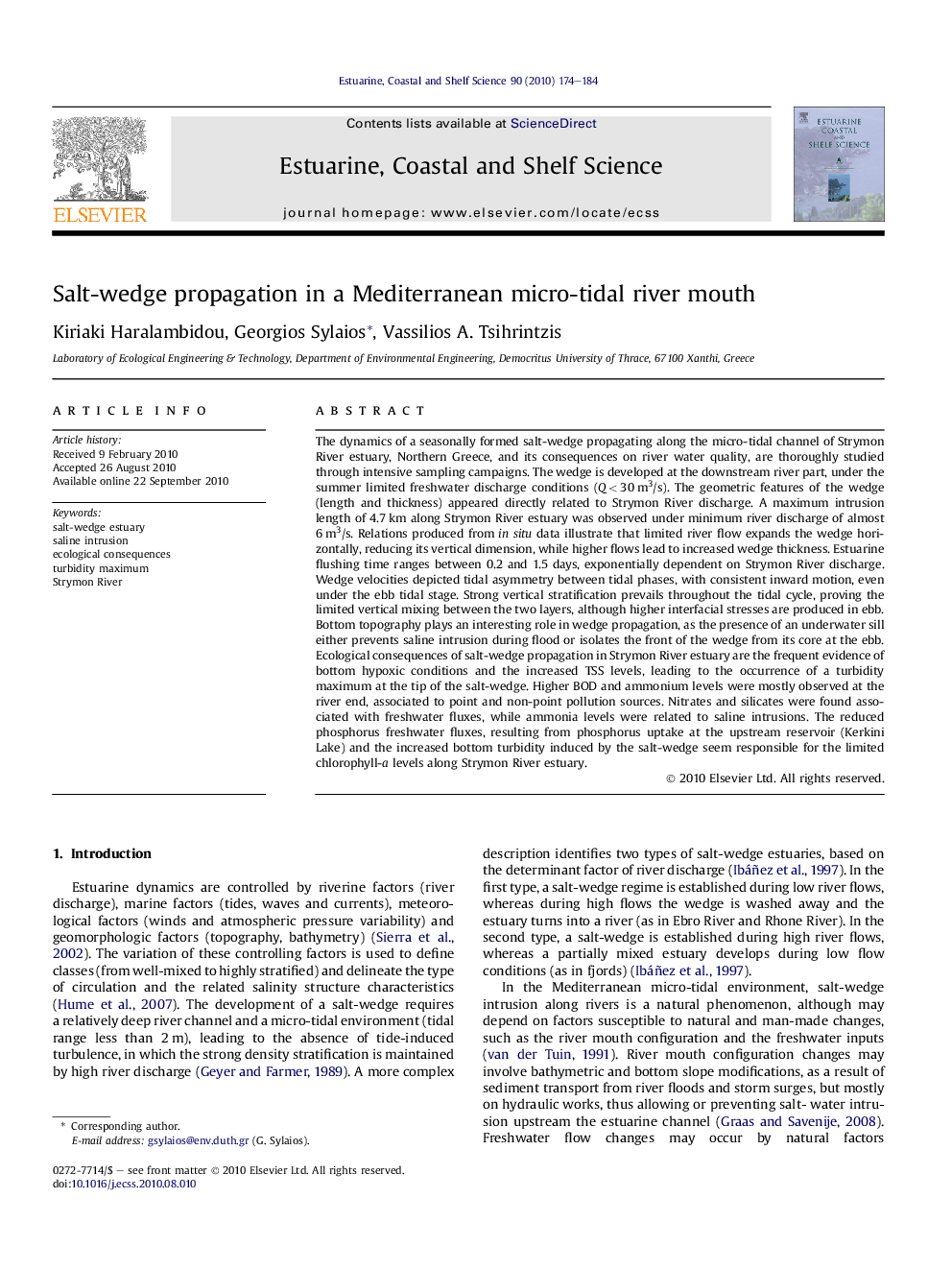| Article ID | Journal | Published Year | Pages | File Type |
|---|---|---|---|---|
| 4540643 | Estuarine, Coastal and Shelf Science | 2010 | 11 Pages |
The dynamics of a seasonally formed salt-wedge propagating along the micro-tidal channel of Strymon River estuary, Northern Greece, and its consequences on river water quality, are thoroughly studied through intensive sampling campaigns. The wedge is developed at the downstream river part, under the summer limited freshwater discharge conditions (Q < 30 m3/s). The geometric features of the wedge (length and thickness) appeared directly related to Strymon River discharge. A maximum intrusion length of 4.7 km along Strymon River estuary was observed under minimum river discharge of almost 6 m3/s. Relations produced from in situ data illustrate that limited river flow expands the wedge horizontally, reducing its vertical dimension, while higher flows lead to increased wedge thickness. Estuarine flushing time ranges between 0.2 and 1.5 days, exponentially dependent on Strymon River discharge. Wedge velocities depicted tidal asymmetry between tidal phases, with consistent inward motion, even under the ebb tidal stage. Strong vertical stratification prevails throughout the tidal cycle, proving the limited vertical mixing between the two layers, although higher interfacial stresses are produced in ebb. Bottom topography plays an interesting role in wedge propagation, as the presence of an underwater sill either prevents saline intrusion during flood or isolates the front of the wedge from its core at the ebb. Ecological consequences of salt-wedge propagation in Strymon River estuary are the frequent evidence of bottom hypoxic conditions and the increased TSS levels, leading to the occurrence of a turbidity maximum at the tip of the salt-wedge. Higher BOD and ammonium levels were mostly observed at the river end, associated to point and non-point pollution sources. Nitrates and silicates were found associated with freshwater fluxes, while ammonia levels were related to saline intrusions. The reduced phosphorus freshwater fluxes, resulting from phosphorus uptake at the upstream reservoir (Kerkini Lake) and the increased bottom turbidity induced by the salt-wedge seem responsible for the limited chlorophyll-a levels along Strymon River estuary.
